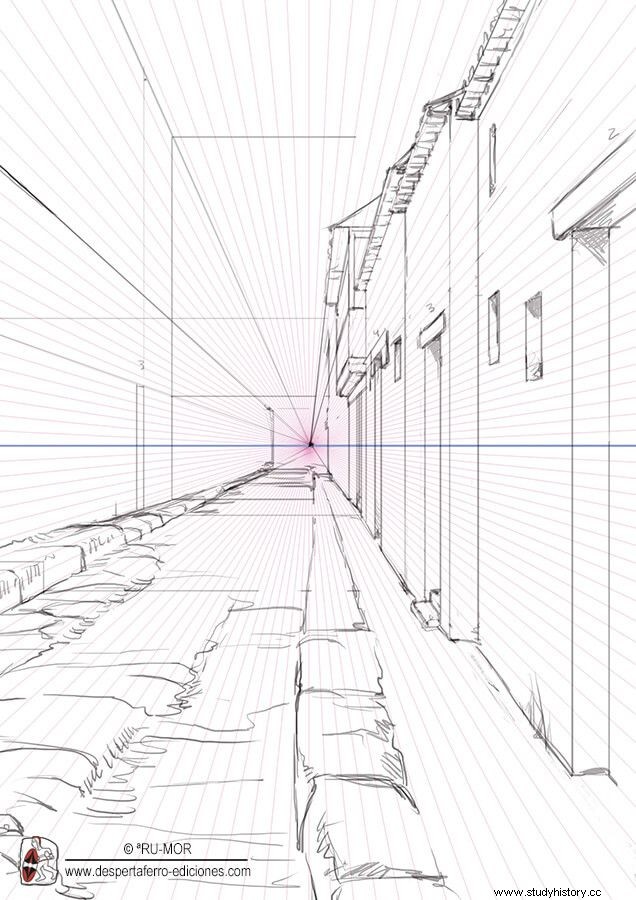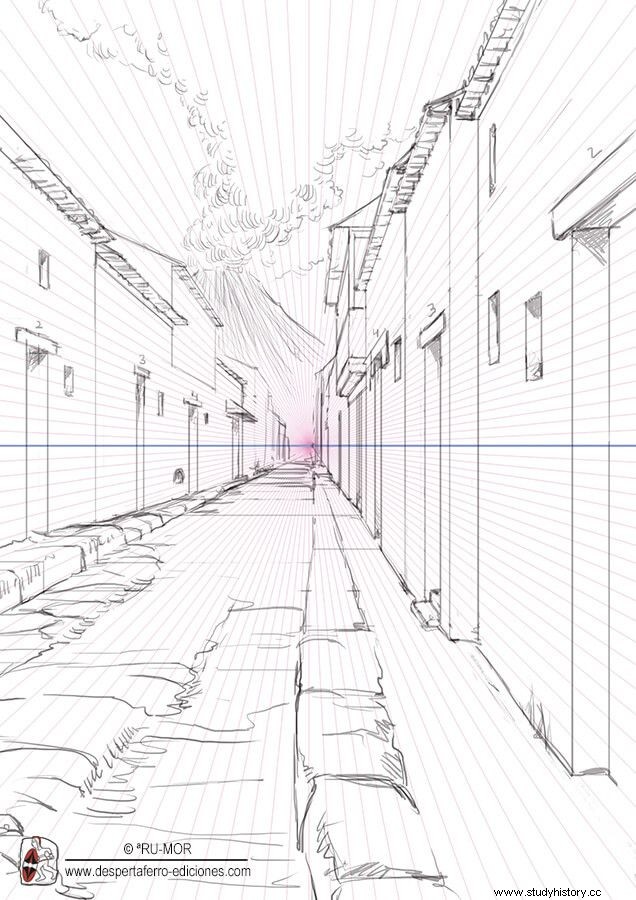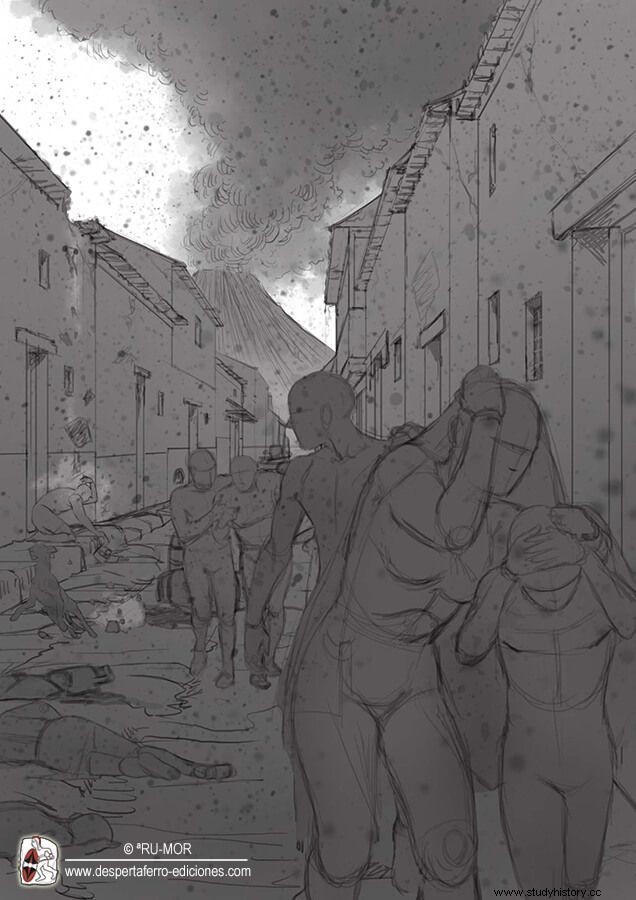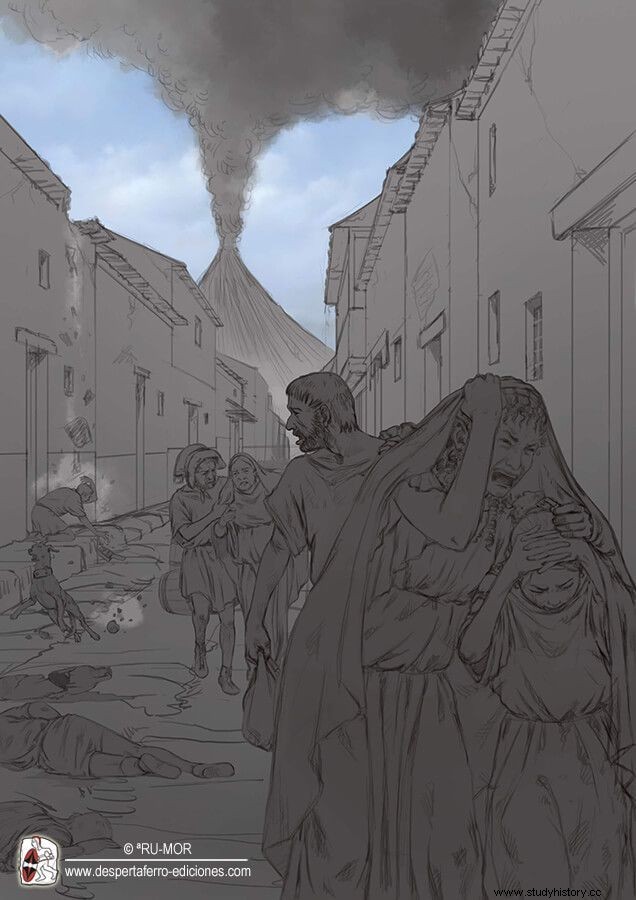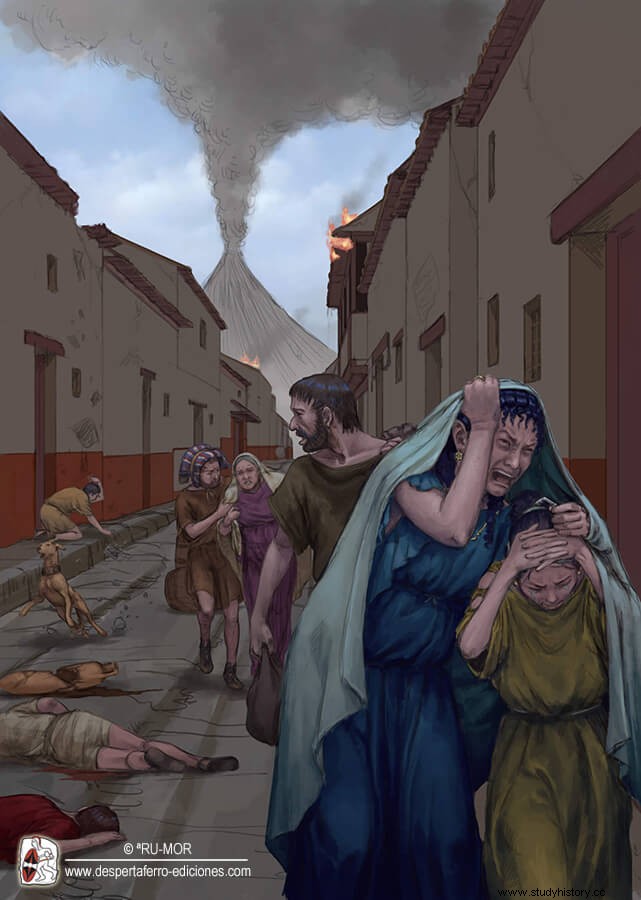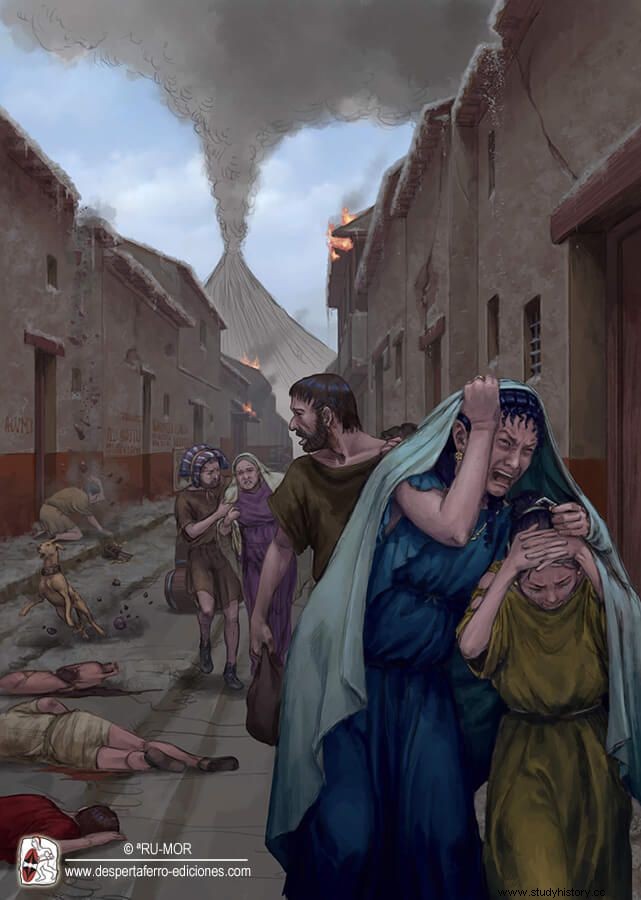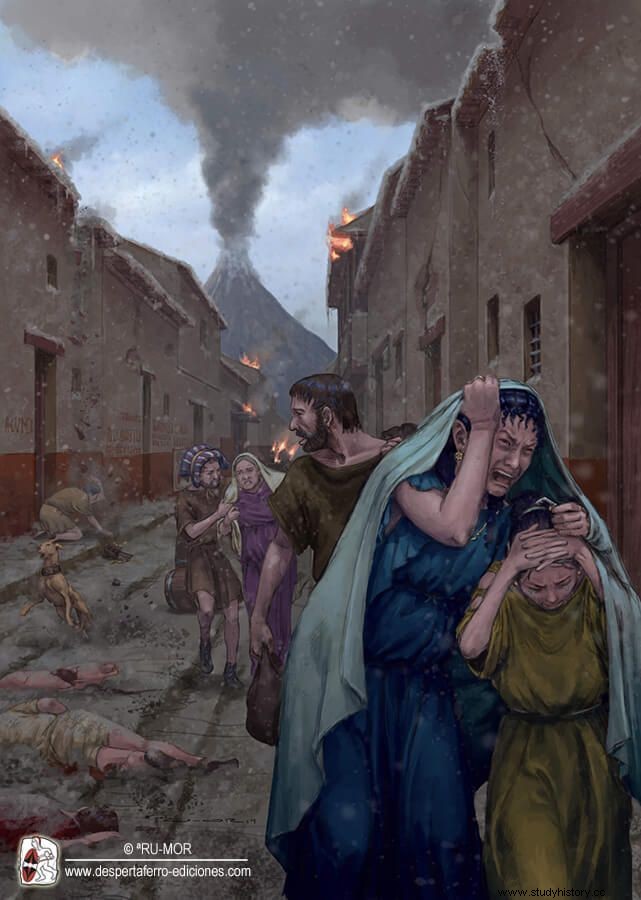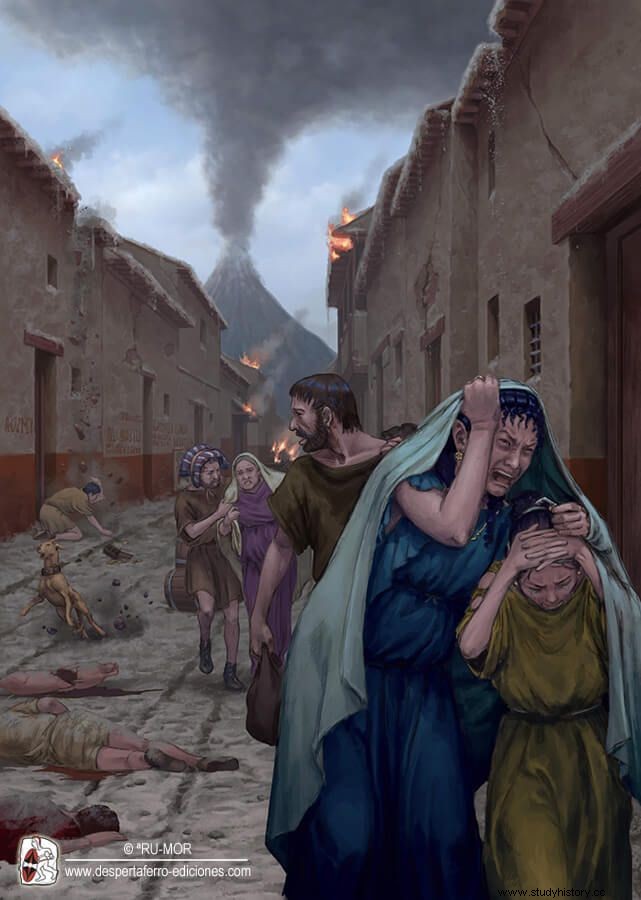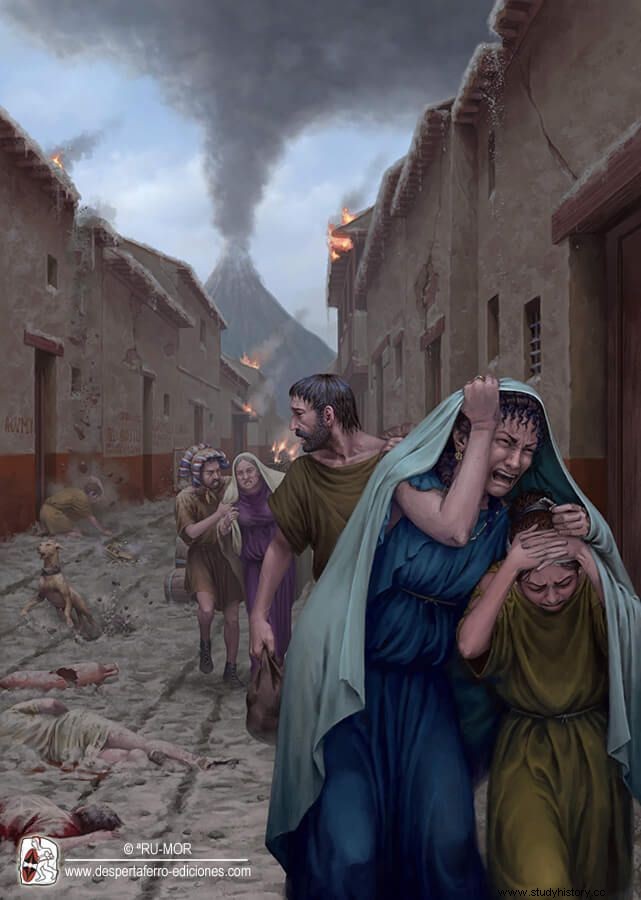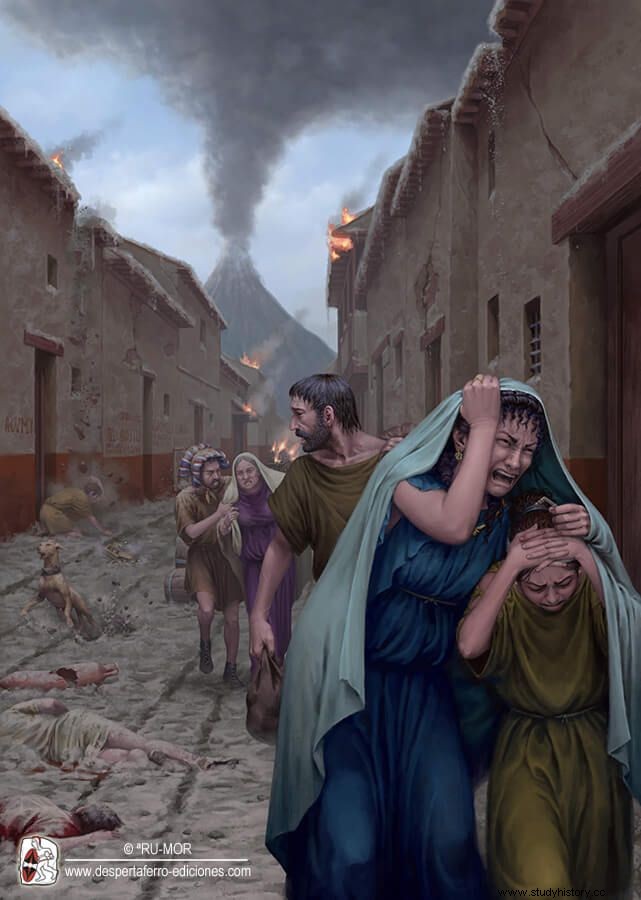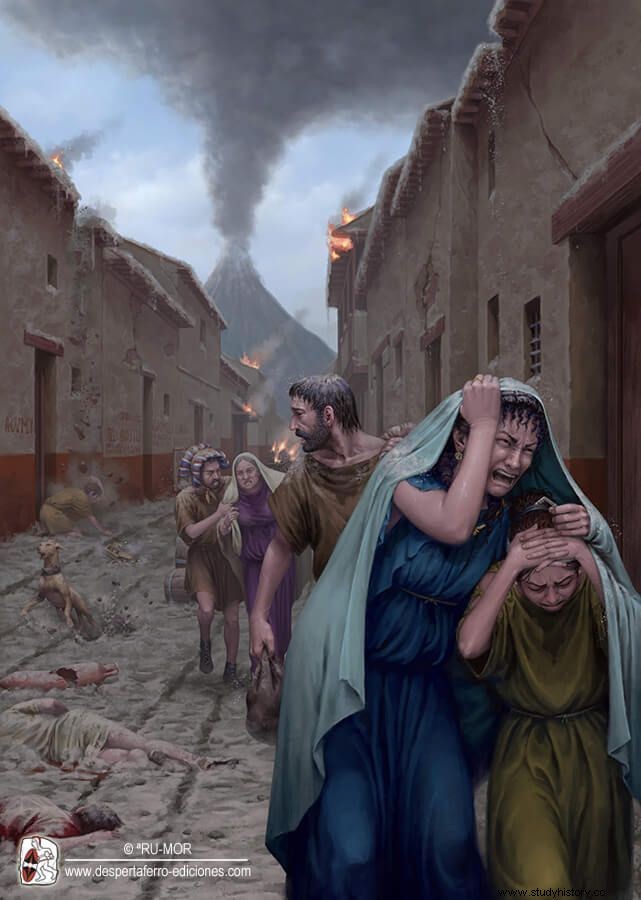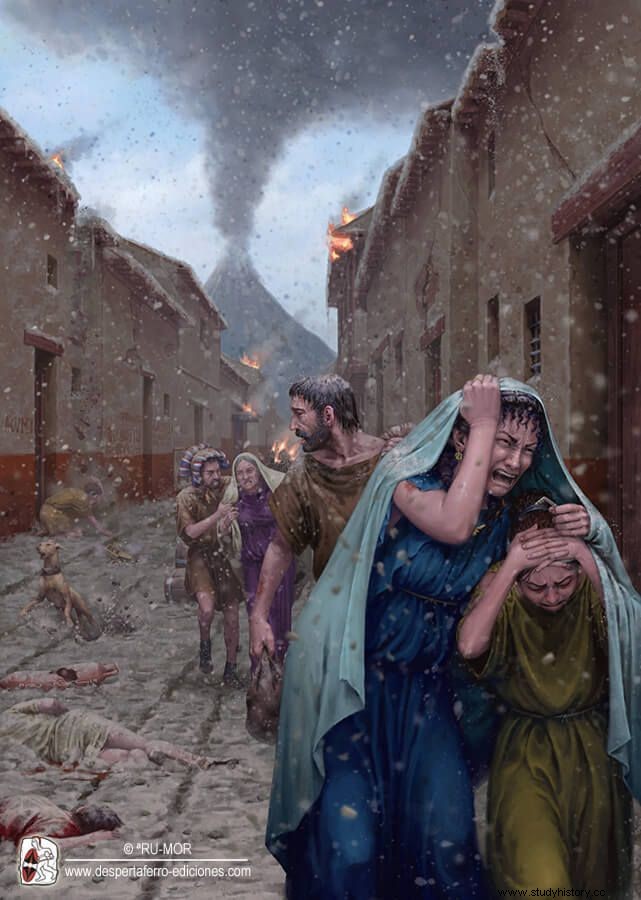
Archeology and History it changes face and, instead of the usual photograph that usually appears on the cover of the magazine, you will find under the title of the header a magnificent historical illustration , fruit of the talent of our beloved ªRU-MOR (Facebook and Instagram), reconstructing the moment when a group of Pompeiians try to flee the city while Vesuvius erupts in the background. With this change to an illustrated cover, which from now on will headline the following issues of the magazine, we wanted to provide an element of quality and originality without deviating in the slightest from the rigor that characterizes our publications.
Historical illustration is part of the DNA of both Archeology and History like the other Desperta Ferro magazines , and from the first moment it has been a central element in its pages, but it also has many advantages over images from photography. A good part of these can be summed up in the fact that, through a scene, many more things can be told at once, in addition to delving into the details that photographs do not always manage to capture, often limited by quality and condition. conservation of materials that are part of the archaeological record. It is not the same, for example, to observe the photograph of a Roman fresco, which is in itself a work of art and usually contains a scene in itself, than an incomplete or deteriorated archaeological object that can explain a lot about a certain culture but it may be somewhat less explicit.
On the other hand, there is also the question of originality , since the historical illustration, made expressly for this project, is something unique and unrepeatable, and on the other hand it is not uncommon for an object or view captured by a camera that is immediately recognizable to be somewhat more hackneyed, to the point that necessarily is repeated in other publications of all kinds. Of course, the illustrations that will appear on the cover will not lack the maximum historical rigor, and although representing a scene forces us to reconstruct aspects or details not always contemplated or well resolved in archaeological research, it is possible, without a doubt, to show what wants to be shown with the same historical fidelity as that of a photograph of a naked archaeological object, while correcting biases derived from the fragmentation or deterioration of these objects, and even restoring their original colors. For this, it is necessary to carry out an exhaustive documentation task in which the greatest commitment will not be lacking. All this, certainly, together with the personality that our illustrators print. The brushes and artistic creativity as a cover artist will be put in this case by ªRU-MOR, one of the essential illustrators in our header, as well as one of the most appreciated by our readers.
Documenting a historical illustration
The process of making a historical illustration like this requires constant communication between the person who documents and the person who finally captures these ideas in an illustration, so that the dialogue with The artist must be fluid, and contemplates the constant sending of sketches, advances and perspectives, and the forwarding of answers with corrections, clarifications or suggestions. The objective is none other than to achieve the perfect balance between the scientific, which should never be relegated to the background, and the artistic, which is highly attractive. Both questions are perfectly compatible.
The cover of The Last Days of Pompeii is a good example of this practice. First of all, the conceptualization of this required the election of the essential key points in any scene; that is, to underline three or four essential elements that had to be prioritized. In this case, the key elements were the erupting volcano, the rain of ash and debris, and the drama of the characters fleeing down a street.
To guarantee maximum reliability in any historical illustration, at Desperta Ferro we carry out an intense documentation task , which in this case resulted in a dossier of several pages written together with the support of thirty reference images that could be used to draw inspiration from the different elements to be represented (clothes, scenery, characters, etc). To avoid errors in the approach or in the details, it is essential that the documentation provided to the illustrator has all the information, even that which is not necessarily going to be used but instead is important to understand what is being represented and facilitate immersion. in what is going to take shape.
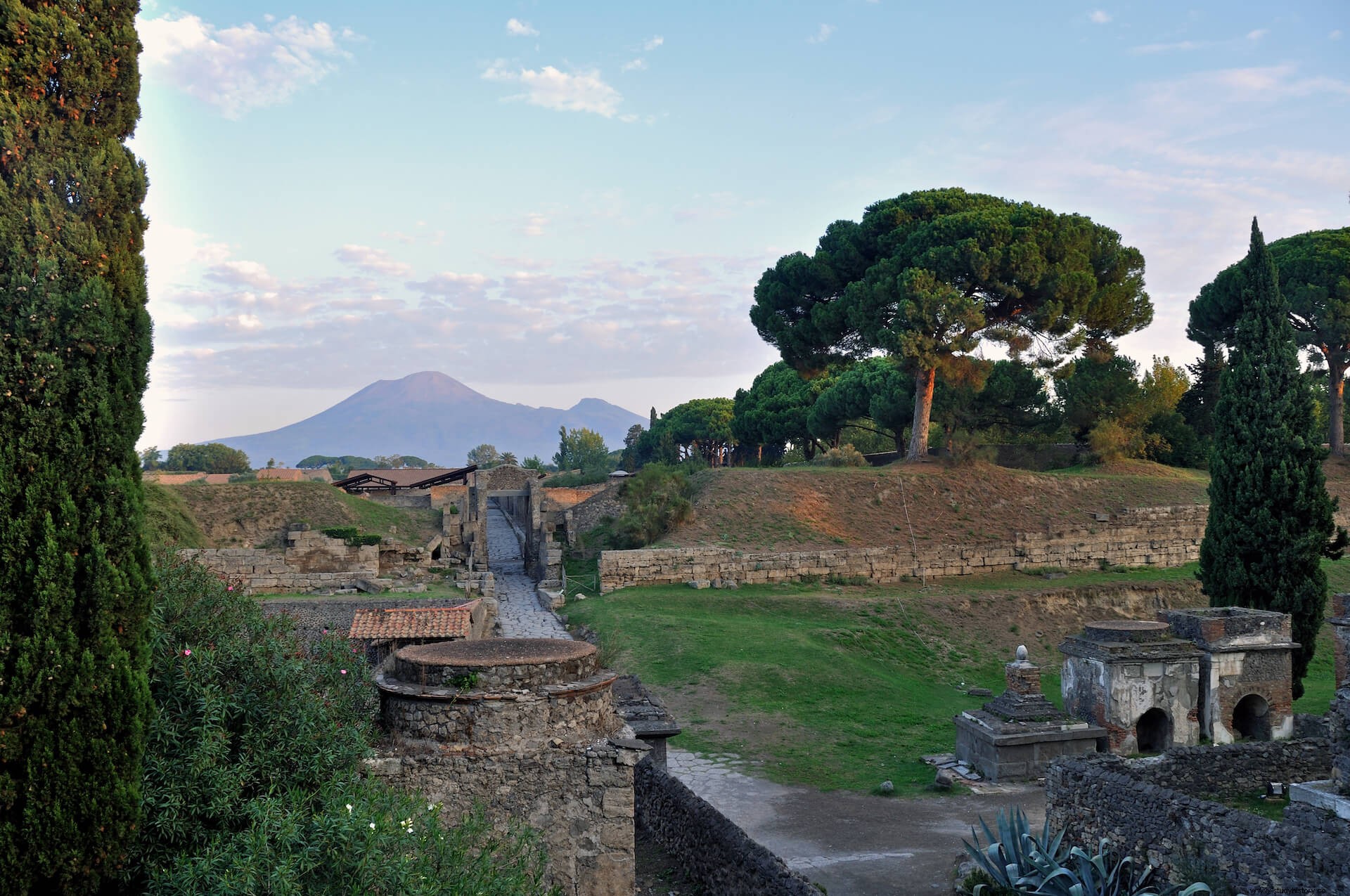
Fortunately, Pompeii is a very well-known archaeological city, so it allowed us to take a real approach which can be fully contrasted. The houses that can be seen in the scene are not just any house in Pompeii, nor are they "type" dwellings, but rather they are strictly the ones that are in that space, with their doors placed where they should be and the heights they should have had. at the time. The choice of place was not easy, because on the one hand it was interesting that the escapees had a plausible direction, heading towards a door located in the south, in the opposite direction of the volcano, but the habitual visitor to Pompeii will have noticed that, due to Due to the particular urban layout of the city, most of the streets that follow a north-south orientation do not face the volcano, but are diverted on a northwest-southeast axis, and in reality outside the open spaces such as the forum, it is very difficult to see the volcano at street level. An exception to this rule is the Nocera route , which leads to the door of the same name and which was finally the one we chose for our approach.
Once the four insulas are known that we were going to drive (two on each side of the street, I.20-II.8 and I.14-II.9) and indicated the characteristics they had (if there were shops, bars or other businesses or were they houses) , the decision of exactly where to place the sight was left to ªRU-MOR, who in his original sketch opted for the conjunction of insulae I.14 and II.9, at the height of door 2 of the latter, to the north from the crossroads with the via de la palestra. This is important, since, for example, if we had placed our focus in the area further south, closer to the Nocera gate, the slope of the street would be greater, due to the unevenness there, which would mean that the perspective of the characters and the volcano would vary from the one we finally used. The houses in that area are, therefore, recognizable, and only the most attentive observer will notice the small aedicule that can be seen behind the cushion that one of the characters carries on his head and that formed part of the façade of insula I.14 in that same space.
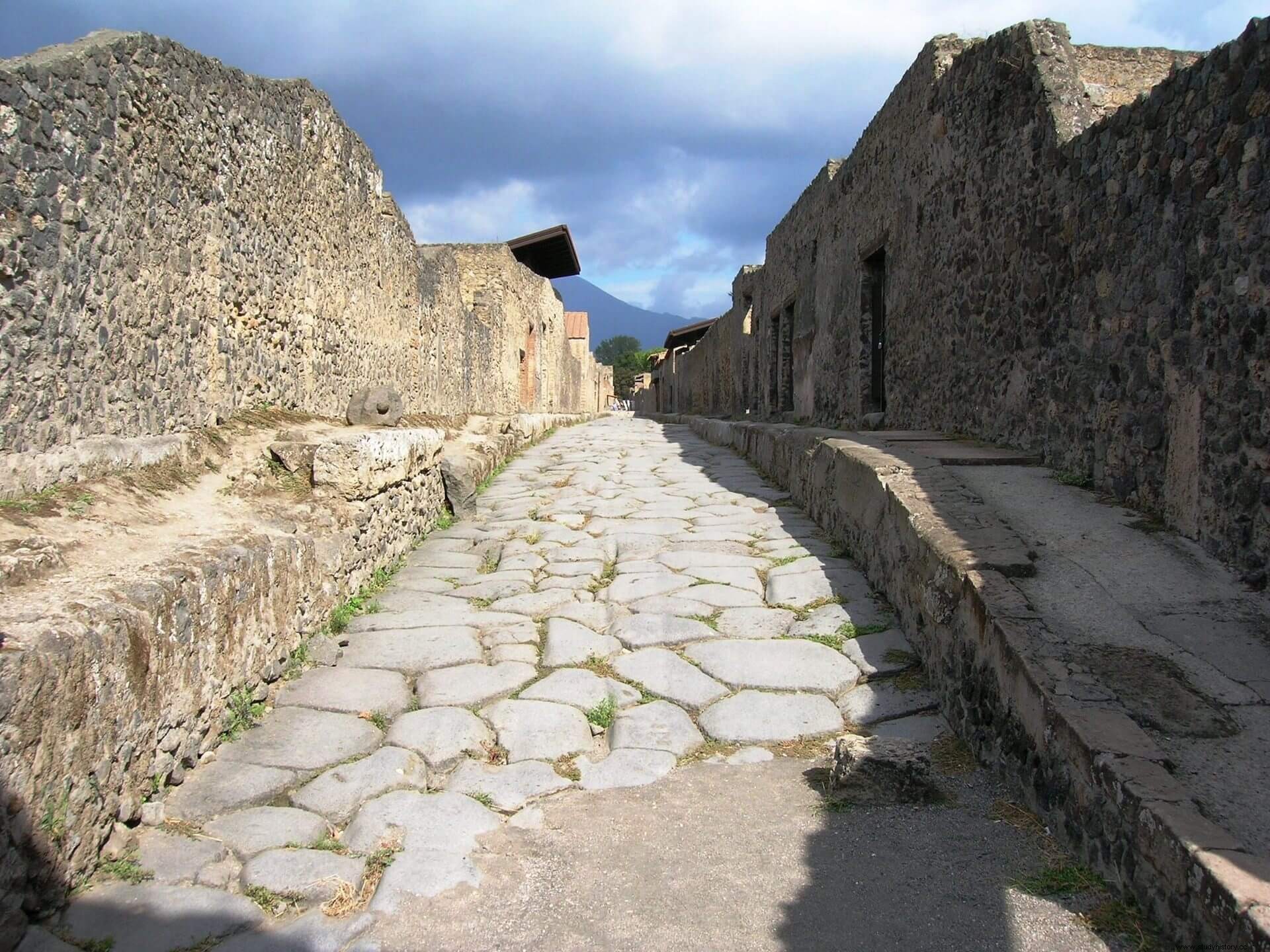
On the other hand, we also wanted to represent a moment in which the inhabitants of Pompeii they could still flee without it being too late (that is, they could appear on the street without it being impossible) and we placed the scene at around 2:45 p.m., practically two hours after the eruption began, and that is why this that the remains of pumice, ash and lapilli They have almost filled the street and reached the level of the sidewalks. The details emerge in the scene:the dog with collar that tries to avoid the blows of the largest volcanic debris fragments, is inspired by the corpse found in the house of Vesonio Primo and in the one that appears in the mosaic of the house of Paquio Próculo; the character on the cushion recovers the episode narrated by Plinio (Letters , VI.16) in which he and his companions protected themselves in this way:

Vesuvius itself It is not exactly as we know it now, with its cone collapsed and unfolded after numerous eruptions, but it tends to rebuild the conical shape that we see in the fresco in the lararium of the centennial house, the only known ancient representation of it; the little bronze box with the savings of the character whose tiles fall from a house is also inspired by some Pompeian finds. Many of the corpses found in Pompeii, Herculaneum and the residential villas around Vesuvius pressed against their bodies, at the moment of their tragic end, bags with coins, figurines and amulets, jewels and other precious objects that they tried to save from destruction, and there was no lack of those who carried the keys to their houses with them, in the vain hope of being able to return to them.
Artistic representation of a historical illustration
As a culmination to this historical rigor in the documentation, the artistic staging that he has managed to capture in his historical illustration ªRU-MOR, of whose creative process we leave you this step by step, generates immediately a shocking sensation that reflects the chaos of the moment, the uncertainty of the characters and the drama of a tragic moment, which meant, at least in appearance, the end of the story of Pompeii, which centuries later, rescued from his ashes, we revive in our pages.
